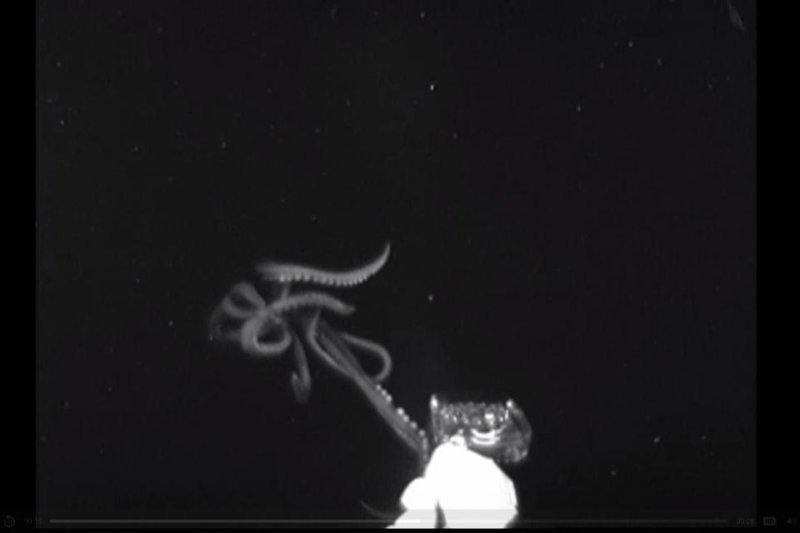Scientists used a baited camera to capture footage of a giant squid in the Gulf of Mexico. Photo by Medusa/NOAA
June 21 (UPI) -- Scientists on a NOAA research expedition have once again captured video footage of a giant squid. The elusive cephalopod was filmed by Medusa, the stealth camera system designed to observe deep-sea creatures without disturbing them.
Researchers baited the Medusa camera with a glowing jellyfish-like pattern to attract deep-sea predators like the giant squid. The bait worked. In the video footage, the giant squid can be seen swimming toward the camera, its arms and tentacles preparing for attack.
The feat marks the second time the Medusa camera has been used to document a giant squid. The elusive species was filmed near Japan in 2013.
Scientists estimate the giant squid specimen was 10 to 12 feet in length. When the researchers on NOAA's "Journey to Midnight" expedition first watched the video footage captured by Medusa, they were "70 percent sure" the cephalopod was a juvenile giant squid.
But the team couldn't be 100 percent certain until they talked with Michael Vecchione, researcher at the NOAA National Marine Fisheries Services and the National Systematics Laboratory at the Smithsonian. Via email, Vecchione confirmed that they were looking at a giant squid.
"We cheered, talked about how to report it, and then had dinner," Sönke Johnsen, expedition crew member and a professor of biology at Duke University, wrote in a mission log update.
According the Johnsen, the rare footage is proof that the giant squid is a magnificent species, but not a monster.
"The giant squid is large and certainly unusual from our human perspective, but if the video shows anything of the animal's character, it shows an animal surprised by its mistake, backing off after striking at something that at first must have seemed appealing but was obviously not food," Johnsen wrote.
Over the last month, an international team of researchers deployed NOAA's remote controlled submersible Global Explorer, the Medusa camera system and a deep-sea custom-built trawl net as part of the agency's weeks-long exploration of the deepest parts of the Gulf of Mexico.
"Our mission for this expedition is to explore what happens to deep-sea animals when a very important constraint is taken away from them -- that of light," scientists explained in a mission overview.
Over the last few weeks, researchers aboard the NOAA research vessel, the Okeanos Explorer, captured video and images of dozens of bioluminescent deep-sea creatures.















